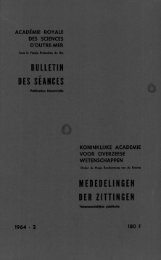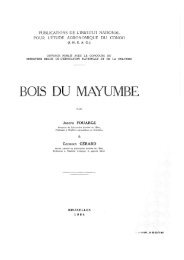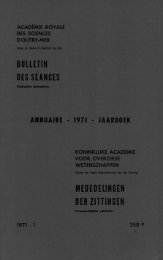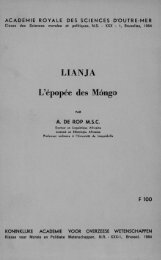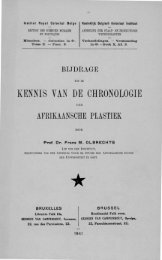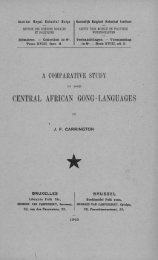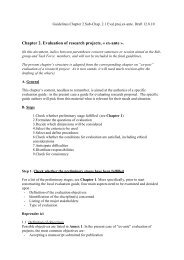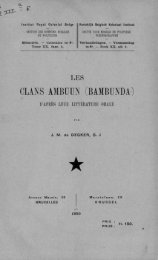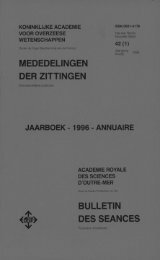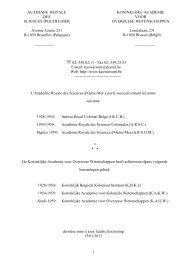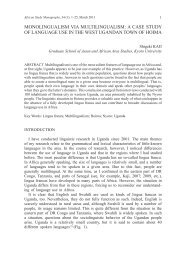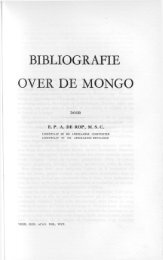(1973) n°3 - Royal Academy for Overseas Sciences
(1973) n°3 - Royal Academy for Overseas Sciences
(1973) n°3 - Royal Academy for Overseas Sciences
You also want an ePaper? Increase the reach of your titles
YUMPU automatically turns print PDFs into web optimized ePapers that Google loves.
— 597 —<br />
Fig. 9. — Sketch of the situation <strong>for</strong> a selective withdrawal.<br />
Santing carried out a few field experiments which utilized<br />
this concept ( 2 7 ) . W hile describing the exploitation of water<br />
resources in the Russian deserts, K u n i n ( 1 5 ) stated that great<br />
success was achieved by this method whereby fresh water is<br />
pumped from the upper borehole and saline water from the<br />
lower one. W o l a n sk i and W o o d in g ( 3 5 ) studied the flow<br />
regime close to a pair of wells situated on opposite sides of a<br />
diffusing interface between fresh water overlying saline water.<br />
The interface was assumed horizontal, and gravitational effects<br />
negligible. A uni<strong>for</strong>m flow, parallel to the interface, is included.<br />
To provide a definite starting point <strong>for</strong> the mixing layer at<br />
the interface, it is further assumed that the fresh and saline<br />
fluids are separated by a thin impermeable layer which extends<br />
from a given distance upstream of the sink to far upstream<br />
(figure 9). This membrane idealised a thin clay membrane<br />
of low permeability. Rather similar concepts exist and solutions<br />
were found <strong>for</strong> an infinite system of parallel line-sinks located by<br />
pairs at regular distance each from the other, and systematically<br />
one above and one below the interface. Boundary layer theory<br />
was used to treat the growth of the diffusive mixing layer,<br />
modified by the presence of the sinks, and closed-<strong>for</strong>m solutions<br />
were obtained as follows.<br />
The important dimensionless parameters are<br />
(l): uo = -jtU oL / 2 Q ,<br />
where L is the distance upstream of the trailing edge of the



